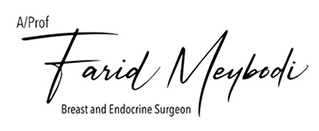Breast Cyst
What is a Breast Cyst?
A breast cyst is a fluid-filled sac located in the breast tissue. They are mostly benign or noncancerous and occur most commonly in women aged 35 to 50 years, although they can develop at any age. They can be very small or large enough to be felt through the skin. If large enough, they usually appear as oval or round structures that move under the breast skin. Post-menopausal women taking hormone replacement therapy are more prone to develop breast cysts than women who are not. These cysts typically disappear after menopause, but in some women, they persist indefinitely.
Causes of Breast Cysts
Breasts include milk-producing glands (lobules), tubes that transfer milk to the nipple (ducts) and supporting fatty and fibrous connective tissues that provide the breasts their distinct shape and density. Breast cysts develop due to the accumulation of fluid inside the glands. They may occur as a result of normal age-related changes in oestrogen levels.
Signs and Symptoms of Breast Cysts
Some of the signs and symptoms of breast cysts include:
- Breast pain or tenderness
- Smooth and easily movable lump with defined edges
- Increase in size of the cyst and breast tenderness just prior to menses
- Decrease in cyst size and subsiding of symptoms post-menses
Diagnosis of Breast Cysts
In order to diagnose a breast cyst, your doctor may perform the following diagnostic tests:
- Areview of your medical history to check for any previous history of breast conditions
- A clinical breast examination to check for any lumps and other problems, such as nipple discharge or changes in the appearance of the breasts
- Mammogram – an X-ray examination of the breasts to check for subtle changes not detected during a physical exam
- Ultrasound scan – use of high-frequency sound waves to create pictures of the breast tissue to differentiate between a fluid-filled cyst and a solid mass
- Fine-needle aspiration – A fine needle is placed into the suspected area, and fluid is withdrawnfor examination under a microscope. This procedure only required for complex cysts.
Treatment of Breast Cysts
Most cysts are noncancerous and disappear on their own, and hence do not require treatment. However, if the cysts are large and easily palpable under your breast skin and are causing painful symptoms, we may recommend a fine-needle aspiration. This involves inserting a fine needle into the cyst under ultrasound guidance and removing the fluid. This helps to reduce pressure, discomfort and other associated symptoms. If the cysts are recurrent in nature despite repeated drainage and exhibit concerning features on pathologic analysis, surgery to remove the cyst might be indicated.







